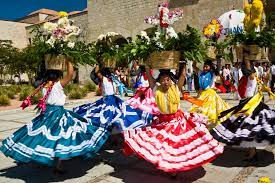March 2021 Chapter Meeting: Our unique tribute to Irish Music
- fredericksburgrecorders

- Mar 7, 2021
- 4 min read
Updated: Mar 19, 2021
Our Unique Tribute to Irish Music (Did you miss our meeting? You can watch the Youtube play back here.)
THE IRISH WHISTLE AND ITS' MUSIC
-The Irish whistle might look similar to a recorder but it functions very differently.
-There is no thumb hole at the back to assist with the range. Therefore, the whistle has a smaller range than the recorder.
-Irish whistles have cylindrical bores. Recorders can have either a cylindrical or conical bore. The bore shape gives the instrument its' characteristic sound.
-Irish whistles are diatonic instruments, meaning, if you are playing in the key of D, you will play on a D whistle. There is no such thing as an alto-d whistle, or a tenor-d whistle. Recorders come in different pitches and ranges, are arranged into families by voice type.
-Traditional Irish music is melodically focused. In many cases there will be no harmony played with a particular tune. (Lack of a harmony part makes for dull recorder consort playing, therefore, we will NOT be looking a traditional tunes and traditional techniques for playing tunes.)
-However, if you are interested in some tune-based music arranged for recorder, here are two options.
-Traditional Irish music is not written down. Traditional players play by ear and learn by rote from other traditional players. Many musicians have transcribed the tunes over the years. (Don’t worry, we’ll use music.)
Irish Tunes in the 18th Century: many of the tunes that are passed around today, appear to have originated in the 19th century or later. However, there was an interest in Irish music far earlier than the 19th century.
Turlough O'Carolan (c.1670-1738) was born in County Meath, Ireland. He went blind by age 18 from small pox. He was taught music and harp and toured around Ireland playing. Many of his tunes are dedicated to patrons. You can find a recorder book of his tunes here: https://www.sheetmusicplus.com/title/o-carolan-s-tunes-for-treble-alto-recorder-sheet-music/4060367
Henry Purcell (1659-1695), A New Irish Tune, Z. 646 arr. Tennent (STB)
This tune was recorded by the Baltimore Consort for their CD, "The Art of the Baudy Song."
You can find the audio here: https://www.youtube.com/watch?v=LAbkZdrUwFU
Our play-along: This arrangement is for Soprano, Tenor and Bass Recorders. The time signature should read 6/4 not 6/8. The soprano part can be played Alto-up.
The score can be found on imslp: https://ks4.imslp.net/files/imglnks/usimg/9/9f/IMSLP645542-PMLP1035392-z646.pdf
Rumble link: https://rumble.com/vedqtf-henry-purcell-1659-1695-a-new-irish-tune-z.-646-arr.-tennent-stb.html
YouTube link: https://youtu.be/QzcVkoh5f2U
Trad. None Can Love Like and Irishman, arr. Kinberling (STB)
I could not find anyone playing this exact tune. This is the closest that I found:
Craic Addicts: https://www.youtube.com/watch?v=SnMJoiNoZsA
Our play-along: This arrangement is for Soprano, Tenor, and Bass recorders. The Soprano line can be played on alto by only transposing one low D up.
The score can be found on imslp: https://ks.imslp.net/files/imglnks/usimg/5/5d/IMSLP102472-PMLP209750-TRIOSFluteOrRecordersKimberling.pdf
Rumble link: https://rumble.com/vedr85-trad.-none-can-love-like-and-irishman-arr.-kinberling-stb.html
YouTube link: https://youtu.be/QjQBi1PXQWQ
POPULAR DANCES: Some of the popular dances found in traditional Irish art are: Hornpipes, Jigs, Irish Reel, and even the Waltz and Polka made it into the repertory.
-Much of Traditional Irish music has a social purpose. Dance music is very popular and there are several musical forms linked to traditional dances.
Hornpipe: This dance emerged in Britain and Ireland in the 16th century (1500s). It is suggested that the dance developed on sailing ships and some of its’ movements are inspired by what happens to a person while the ship lurches to and fro.
-There are fast and slow hornpipes
-Hornpipes are danced in hard shoes. The stomping of the shoes help dancers keep time.
-Hornpipes are often transcribed in 2/2 or 4/4 time and the eighth notes are played dotted/swung.
This Video comes from the Irish Traditional Music Archive
Authentic Hornpipe: https://www.youtube.com/watch?v=t05pHsIVZM4
Our play-along: Trad., Murphy’s Hornpipe, arr. Kram (SATB)
The score can be found on imslp: https://imslp.org/wiki/Irish_Dance_Suite_for_Four_Recorders_(Kram%2C_Richard)
YouTube link: https://youtu.be/xBGbI1R97VU
Jig: The Jig is a fast folk dance in compound time (6/8). The dance is said to have originated in England but quickly spread around Europe.
Want to dance an Irish Jig? Watch here: https://www.youtube.com/watch?v=iHxGisr7a_I
Traditional Slip Jig: https://www.youtube.com/watch?v=HtCYUdJJM3s
Students learning a jig: https://www.youtube.com/watch?v=HijD6FqeL5Y
Our play-along:Trad., The Old Horned Sheep Jig, arr. Kram (SATB)
This jig is arranged for SATB recorders. All fermati are held 1 extra beat.
The score can be found at imslp:https://imslp.org/wiki/Irish_Dance_Suite_for_Four_Recorders_(Kram%2C_Richard)
YouTube link: https://youtu.be/2ffaxZGCtVM
Reel: This dance originated in the Scottish highlands by at least the 16th century. In Irish dance, the Reel is danced in soft shoes and is one of the first dances taught to students. Musically Reels are written in 2/2 or 4/4 time. They differ from Hornpipes musically in that the eighth notes are played straight.
Gothard Sisters: The Difference between Irish Reels and Jig (good clean fun) https://www.youtube.com/watch?v=eo_AJQBxZ3c
ADDITIONAL RESOURCES
Advice from an traditional Irish Flutist:
Irish flutist, Stephanie Dawn, (ig @stephaniedawnmusic) (facebook.com/stephanie.dawn.musician) recommends the following resources if you want to get into traditional Irish music:
Books:
Larsen, Grey, The Essential Guide to Irish Flute and Tin Whistle. Mel Bay.
https://www.sheetmusicplus.com/title/essential-guide-to-irish-flute-and-tin-whistle-sheet-music/20111614?d=sem_sidecar&popup=false&d=sem_sidecar&popup=false&country_code=USA&utm_source=google&utm_medium=cpc&adpos=&scid=scplp20111614&sc_intid=20111614&d=sem_ggl_{campaign_id}_&gclid=CjwKCAiAyc2BBhAaEiwA44-wWyS7ZfgojlEqvsBW_uQIP0ixbx-CA0aF1WURz314A_IwZCTqVF65rBoC4zsQAvD_BwE
Krassen, Miles, O’Neill’s Music of Ireland
https://www.amazon.com/ONeills-Music-Ireland-Fiddle-Tunes/dp/0825601738
For online Jam sessions:
thesession.org
Beginning Tunes:
Stephanie also recommended to me some tune for beginners starting to learn traditional Irish music:
-The Sporting Pitchfork https://www.youtube.com/watch?v=MPIxUXWDlA8
-The Congress (Reel) https://www.youtube.com/watch?v=wATgt1L2rUQ
-Top of Cork Road (Jig) https://www.youtube.com/watch?v=eGembsFVQaM
-Harvest Home (hornpipe) https://www.youtube.com/watch?v=w8QFFz1po68
-The Butterfly (Jig) https://www.youtube.com/watch?v=ZeP5tDroavw
Bibliography:
Dawn Stephanie, Traditional Irish Flute Playing: An Introduction. Lecture, Mid-Atlantic Flute Convention: February 20, 2021.
Hansen, Rachel, The Irish Jig, website https://dance.lovetoknow.com/Irish_Jig
Irish Traditional Music Archive, YouTube Channel https://www.youtube.com/user/ITMAVideos/videos
McCullough, L.E., The Complete Irish Tin Whistle Tutor. London: Oak Publications, 1987.







Comments